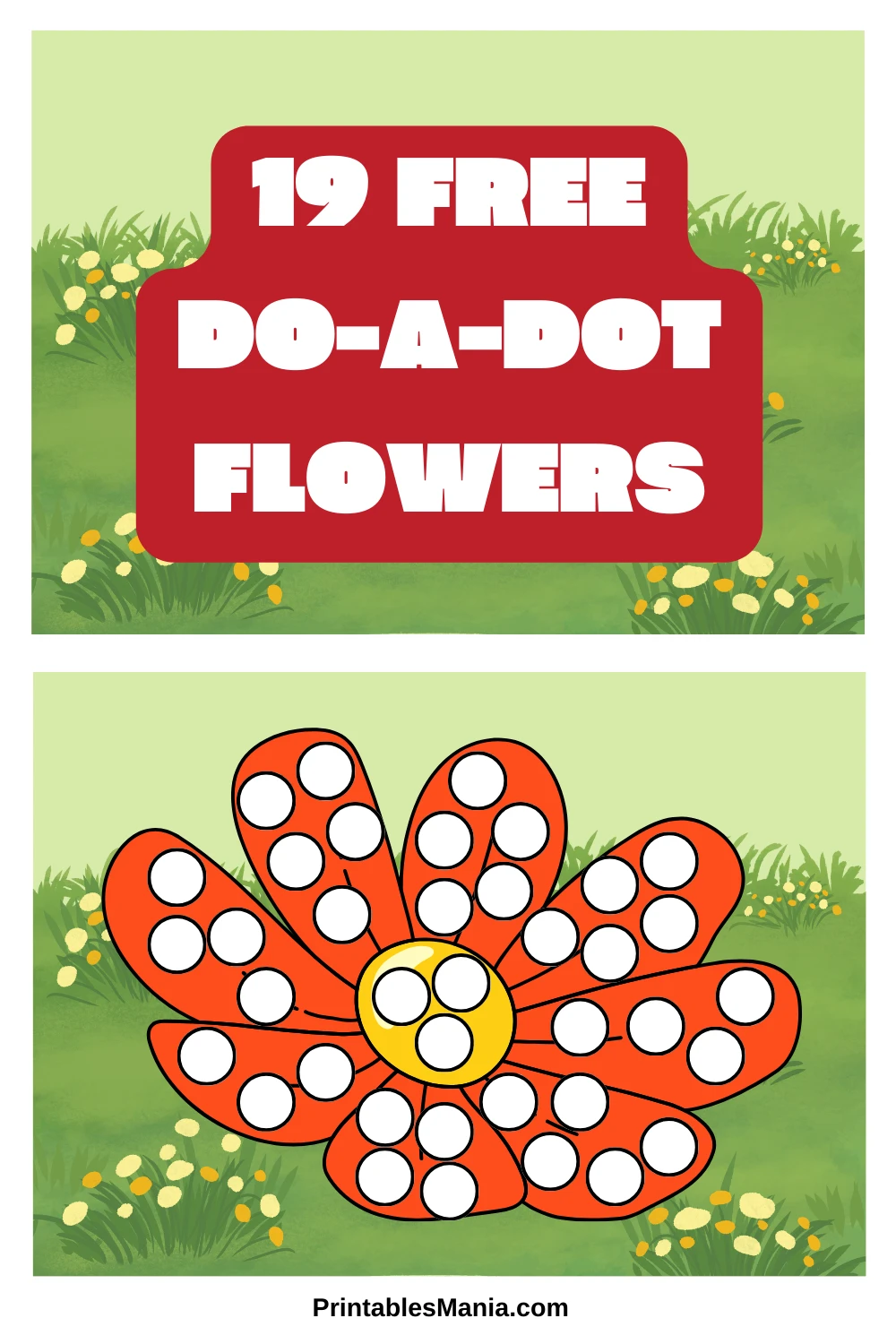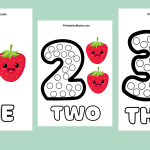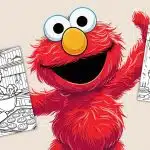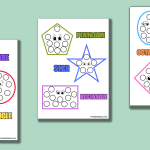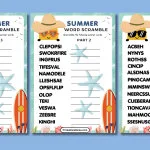Bring the beauty of a garden into your home or classroom with our delightful Do A Dot Flower Printables! These engaging activities are perfect for preschoolers, kindergarteners, and young children who love exploring the wonders of nature.
With various charming floral designs featuring tulips, roses, sunflowers, and daisies, these printables offer a fun and creative way to develop essential fine motor skills and hand-eye coordination.
Easy to set up and requiring minimal materials, our Do A Dot Flower Printables are a fantastic resource for parents, teachers, and homeschoolers looking to incorporate engaging, hands-on learning activities with a spring or garden theme.
Get ready to watch your little ones blossom with excitement as they bring these delightful flower printables to life using bingo daubers or dot markers!
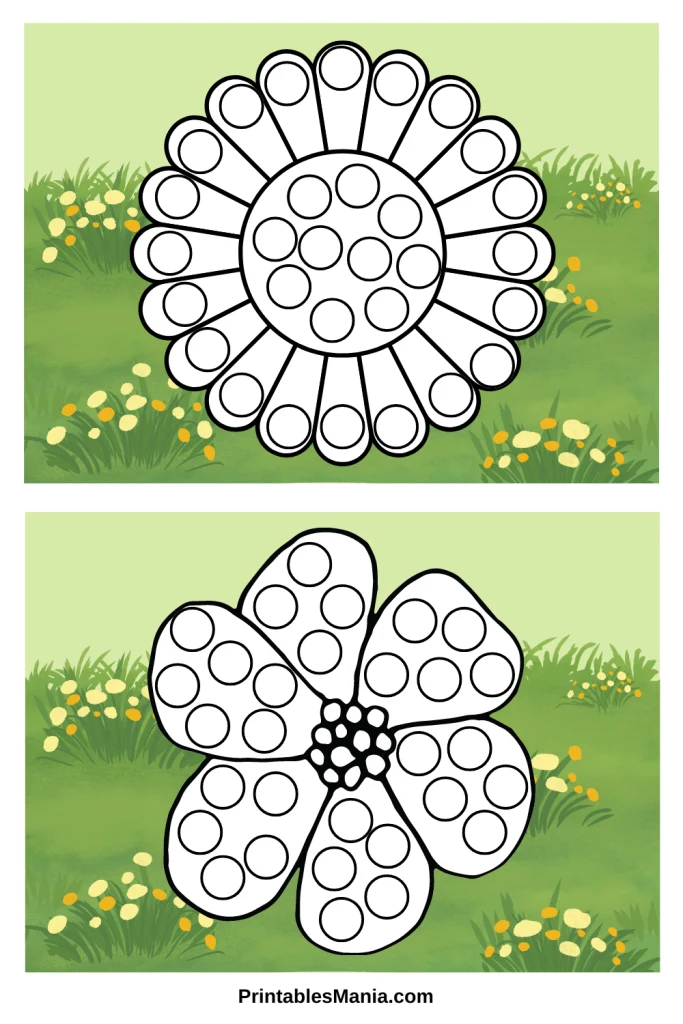
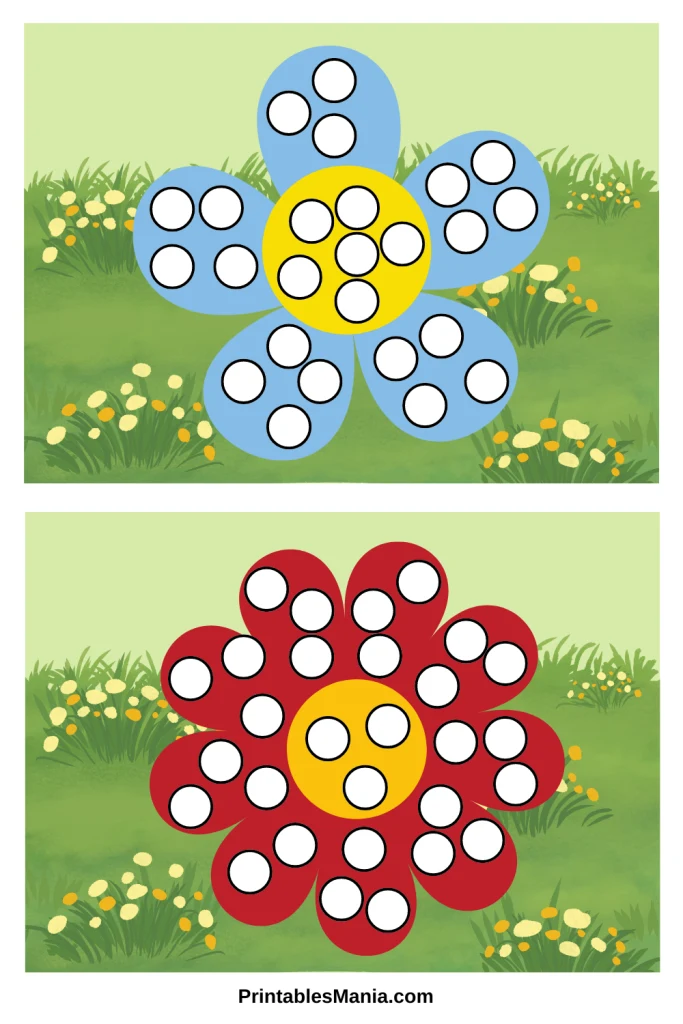
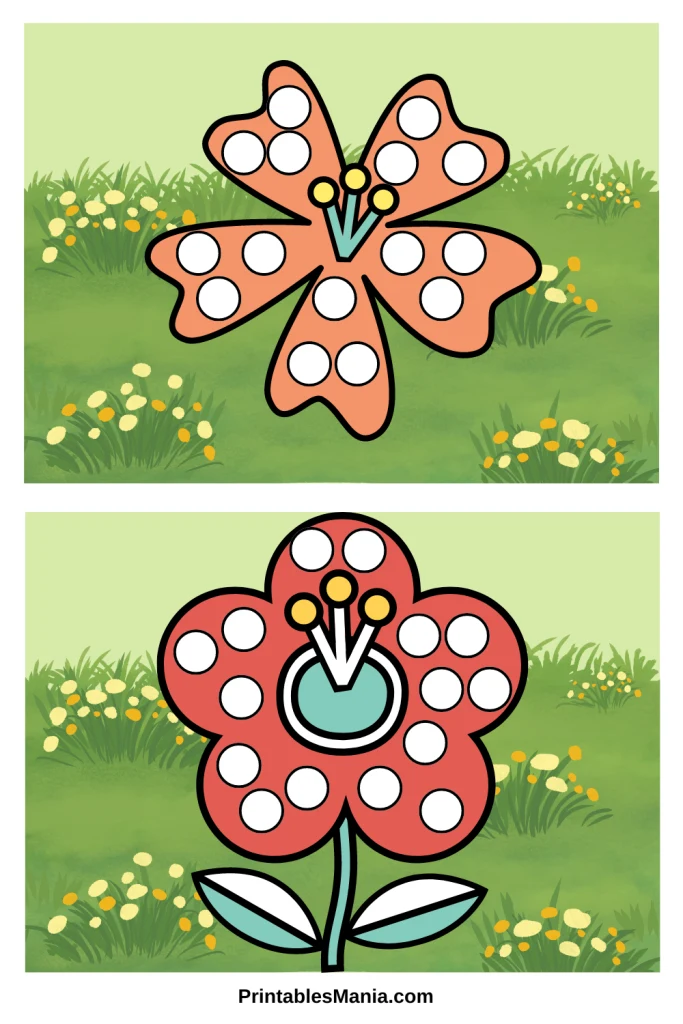
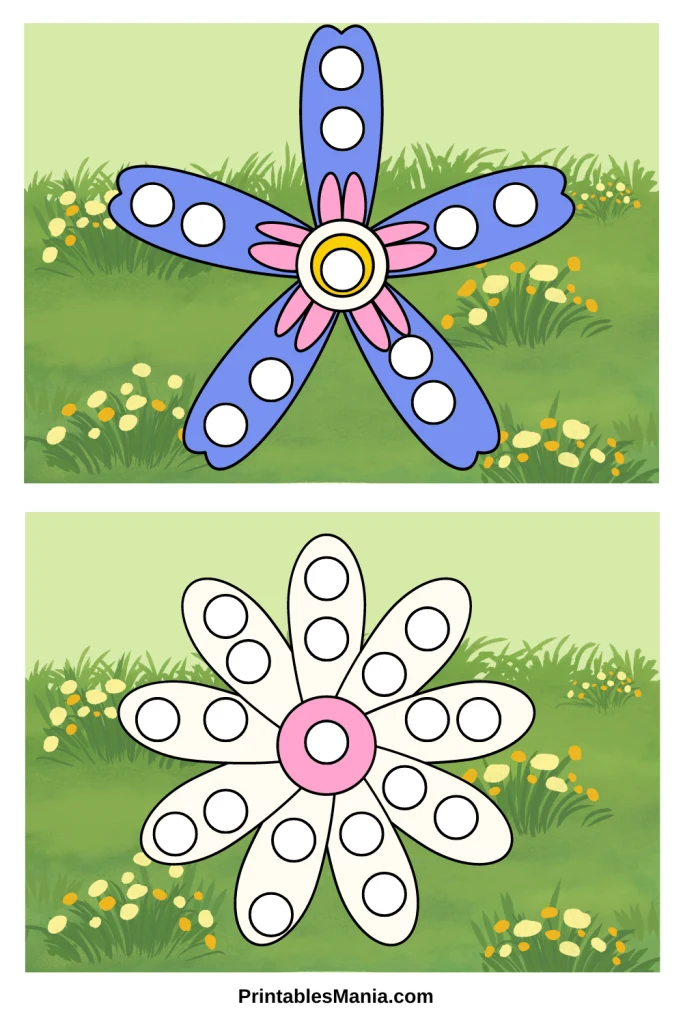
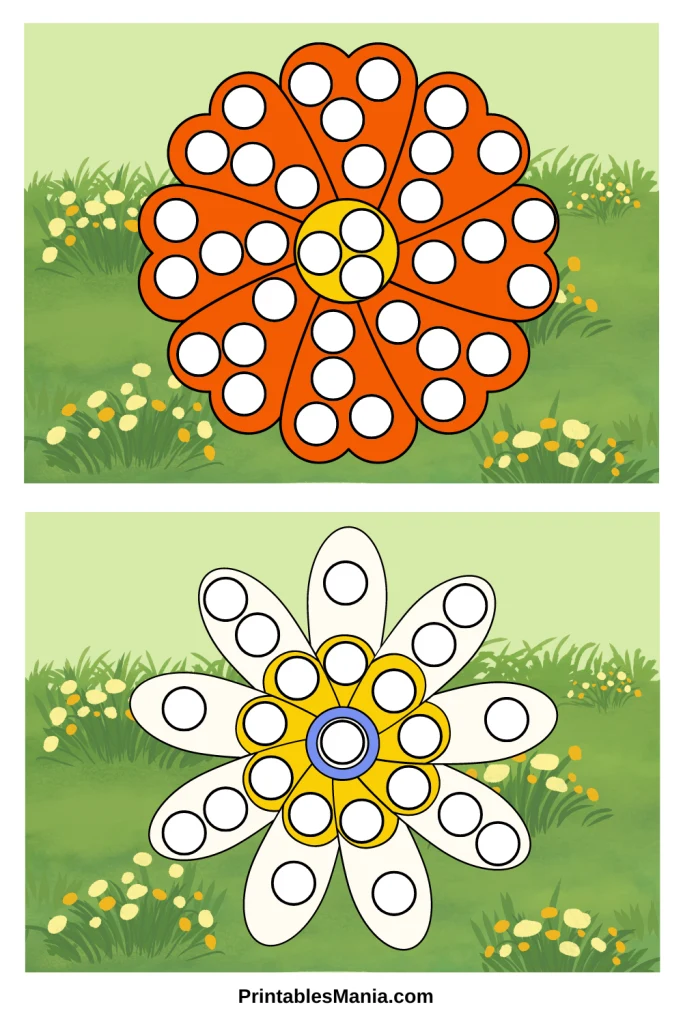
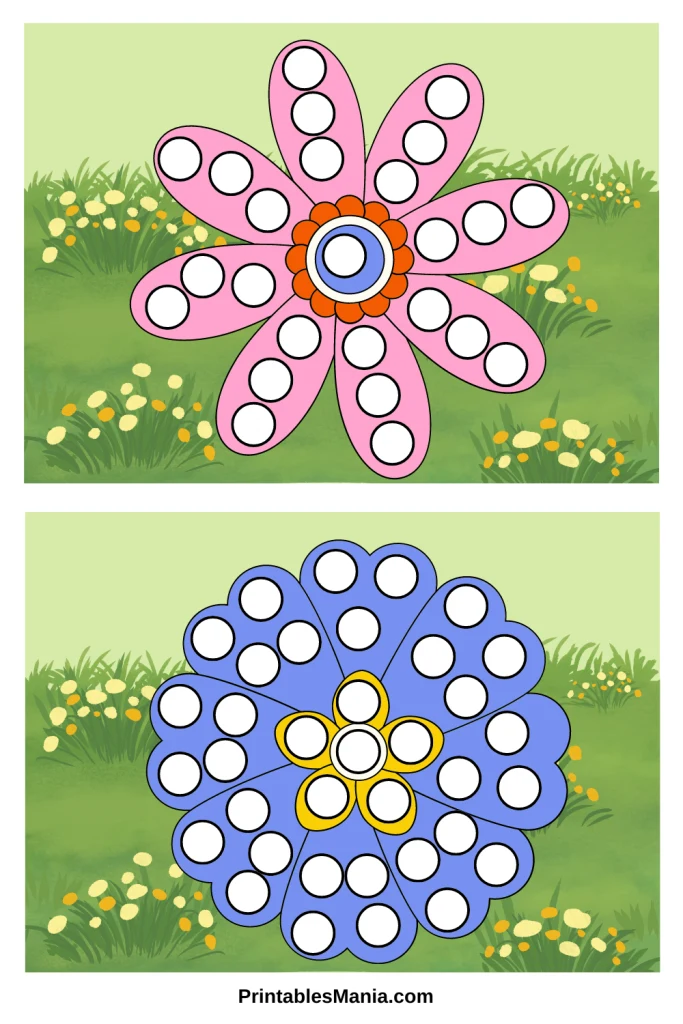
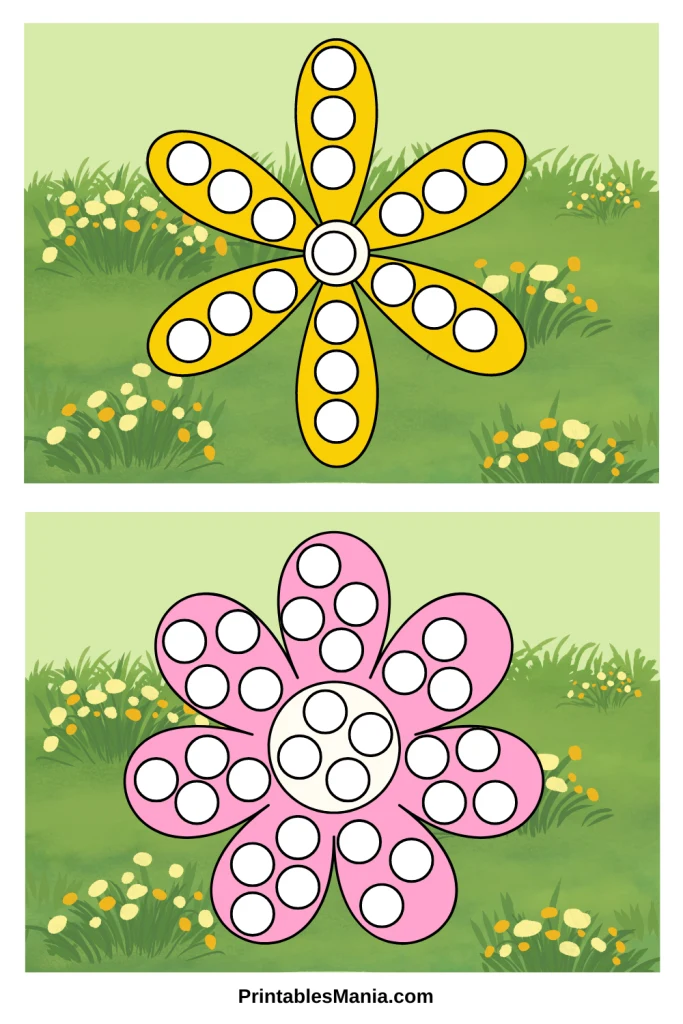
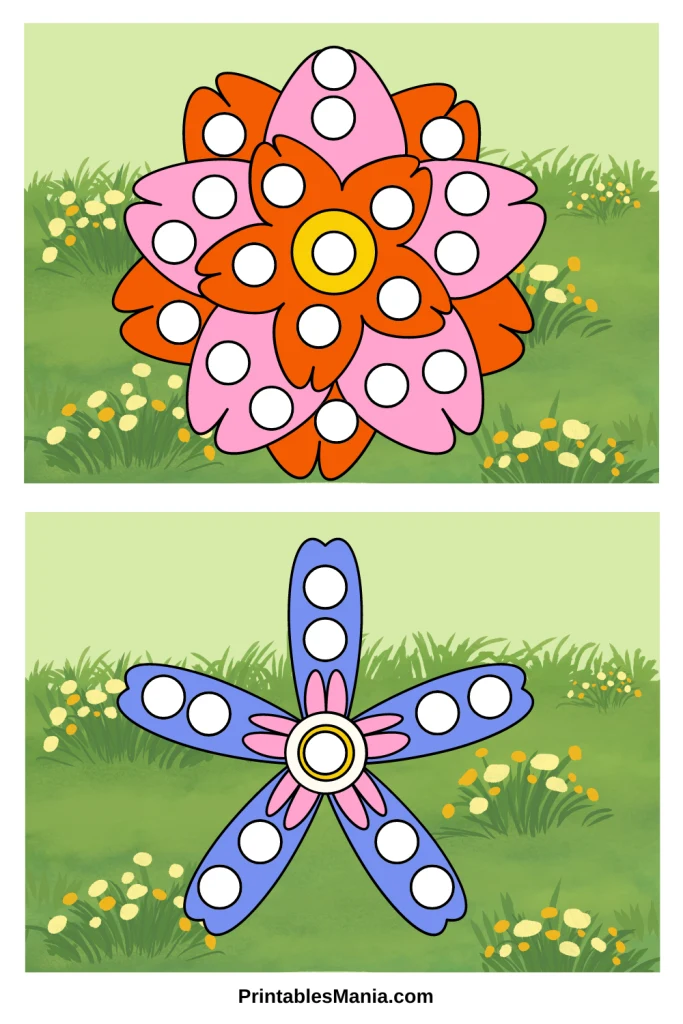
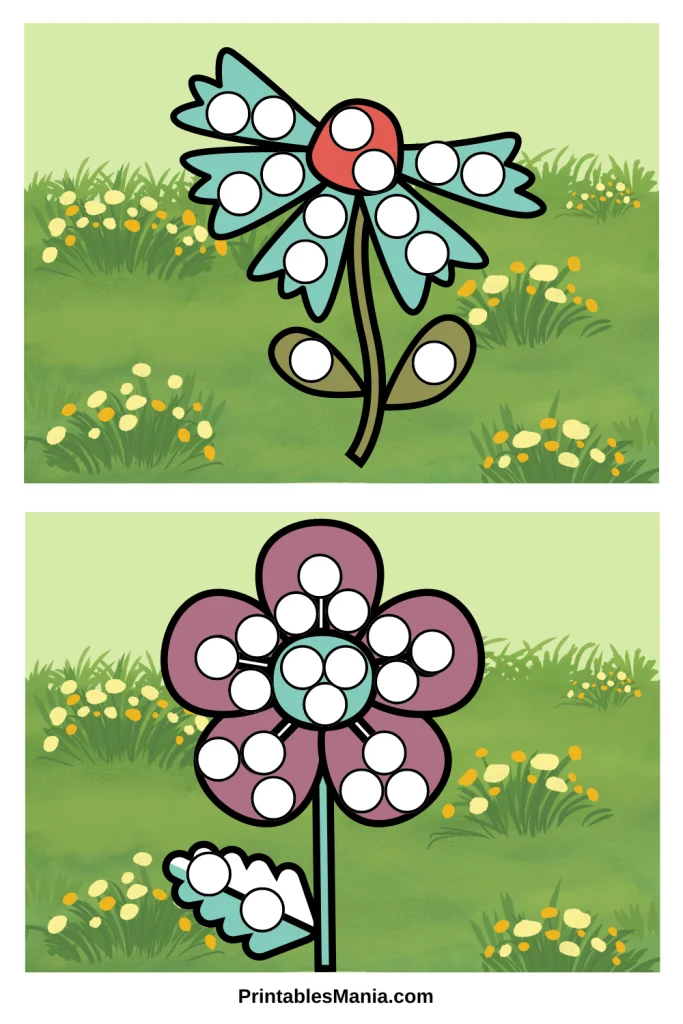
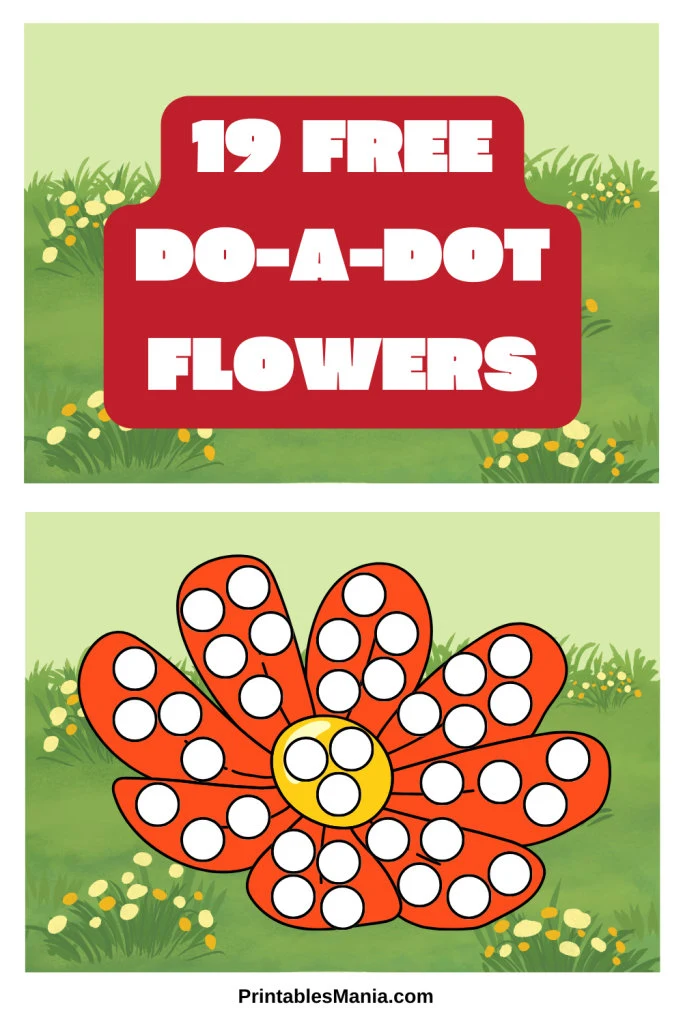
Creative Extensions for Do A Dot Flower Printables
Expanding on Do A Dot Flower Printables beyond their basic use can enhance creativity, deepen learning, and increase engagement. Here are several creative extensions to consider:
Create a Botanical Art Gallery
Encourage children to create a collection of flower printables, each colored in different hues and styles. Once completed, they can organize a mini-exhibition, either at home or in a classroom setting, to display their artwork. This activity can help boost confidence and offers a platform for children to explain their artistic choices and the floral species they’ve depicted.
DIY Flower-Themed Crafts
Use the colored flower printables in various crafts:
- Flower Crowns: Cut out the flowers and attach them to a paper band to create wearable flower crowns.
- Custom Greeting Cards: Paste the colored flowers onto folded cardstock to make personalized greeting cards.
- Decorative Mobiles: Suspend several cut-out flowers from a hanger or a stick to create a decorative mobile, which can beautifully decorate a room or classroom.
Interactive Flower Matching Game
Develop a matching game where children match the colored flowers with real-life photographs or additional printables that depict:
- The habitats of different flowers.
- Pollinators associated with each flower (e.g., bees, butterflies).
- The same flowers at different stages of growth.
Storytelling with Flowers
Invite children to use their flower printables as characters or elements in a story. They can create tales about a magical garden or adventures of a bee finding flowers. This exercise encourages creativity, narrative skills, and can also be integrated into a lesson on the importance of flowers and pollinators in ecosystems.
Educational Benefits of Do A Dot Flower Printables
Utilizing Do A Dot Flower Printables isn’t just fun; it’s also a valuable educational tool. Here’s how these activities can benefit learners:
Botanical Knowledge
Children learn about various types of flowers, including their names, characteristics, and significance. This introduction to basic botany can spark a lifelong interest in plants and nature.
Fine Motor Skills Development
Manipulating dot markers to color within the lines helps young children develop fine motor skills. This practice enhances hand-eye coordination, which is crucial for writing, typing, and other manual tasks.
Color Recognition and Theory
Working with different colors and deciding how to apply them helps children learn about color recognition and relationships (such as primary, secondary, and complementary colors). They can experiment with color blending using markers to see how combining colors can create new ones.
Science and Ecology Integration
Discuss the role of flowers in the environment, including how they contribute to the biodiversity of habitats, their part in pollination, and their importance to human life. This can lead to broader discussions on environmental conservation and sustainability.
Sensory Development
The tactile nature of using markers and the visual stimulation from the vibrant colors can be a sensory experience for children. This type of activity can be particularly beneficial for sensory development, helping children to refine their senses and cognitive recognition.

